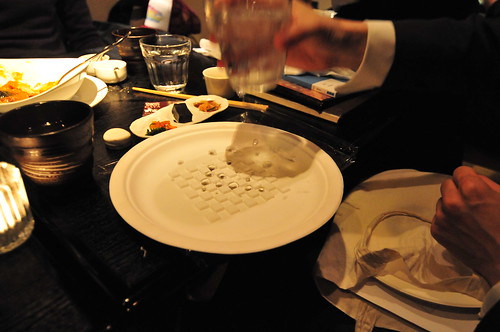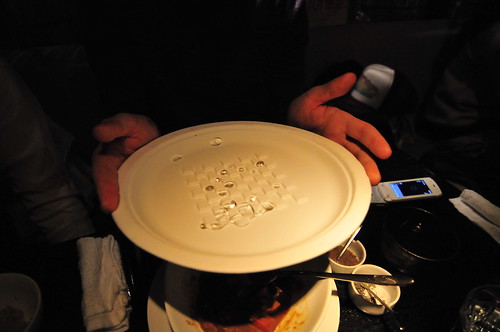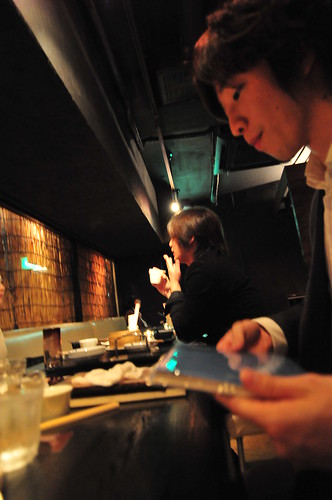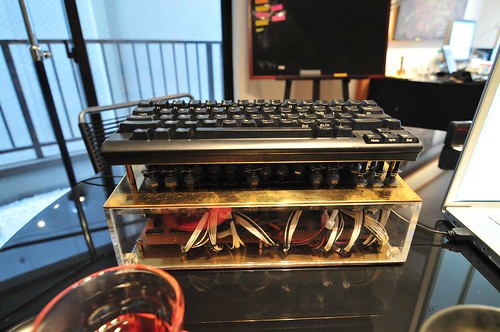
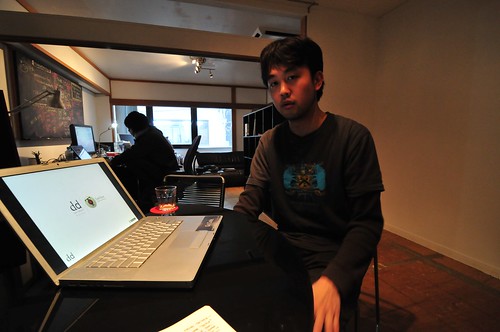
Spent a very cool conversational show-and-tell-y bit of time with dividual’s Dominick Chen and Takumi Endo at their new cozy studio digs. I guess Paul connected us last minute, which is basically how this whole trip has been, which is fine.
Dominick and Takumi have been working quite a bit with the semantics of time in digital interactions. They created this project called TypeTrace. It’s a mechanism for exploring the relationship between physical interactions in digital contexts. A keyboard is used to record the composition of words — letters or books, in one case. The recording captures all subtleties of working at a keyboard, which can then be played back with the keyboard acting as a kind of player piano. The keys are literally articulated from underneath, giving the appearance of a ghost writing the composition. If a key is held done a bit longer than others, you see that (and hear it.) The letters and words are played back on screen, changing their typography depending on how long the composer has lingered over certain passages. Letters and words will grow in size if a key is held down a bit longer than others, suggesting that the composer has lingered over a word, and insinuating, perhaps, that their thoughts mulled over the meaning at that point of the composition.
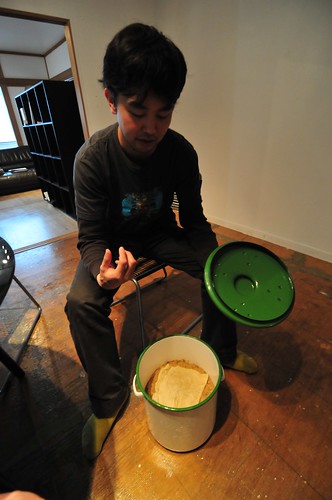

Our conversation about “slow” things and the meaning of time in a digital age, compelled Dominick to slip into the studio kitchen and bring out their fermentation vat — another slow process. In the digitally networked milieu, fermentation gets a creative commons mark!
Chen studied at UCLA’s DMA. The TypeTrace project started out as an interactive art project, exhibiting in various museum and gallery contexts. It had some good success. Chen went on to begin studies in an interdisciplinary Ph.D. program in Tokyo, and left that recently to pursue TypeTrace. His interest, shared I believe by many smart, aspirational autodidactic thinker/maker/researcher/theory people is to find ways to circulate his ideas outside of the usual art contexts, and beyond the confines of academia, where “makers” are relegated to engineering disciplines. Like many others, he finds the “interdisciplinary” approach to art-technology-design works best in cocktail party conversations than it does when academia tries it in actual practice.
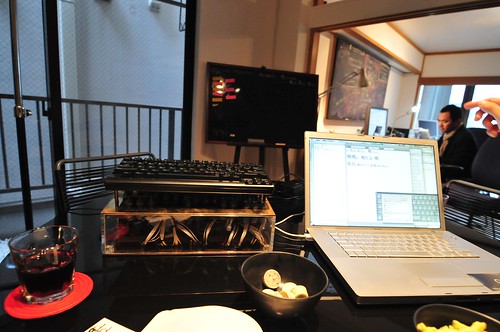
While we were talking, we found a common interest in the possibilities of working from the fringes of design, art and technology — doing peculiar things that are partly based on artistic dreams, the practical and instrumental aspects of engineering, and design principles that put the experiences of people front and center. I shared with him the work I’ve been doing on the Slow Messenger and Slow Mail projects — similar principles in many respects to TypeTrace. (The idea that something is lost in the lickity-split “conversations” of digital messaging.) We talked about the relationships between design, art and technology. Or, I tried to explain (the reason I am in Tokyo) that I am trying to understand more completely this question I am having about ways to create new experiences when design, art and technology are brought together. (I’m coming to a conclusion that interdisciplinarity is a dead, especially as I see more and more practitioners who embody, simultaneously, these “practices” and are quite undisciplinary in that they have no professional stakes in a conventional sense, to any of art, design or engineering. More about this later.)
